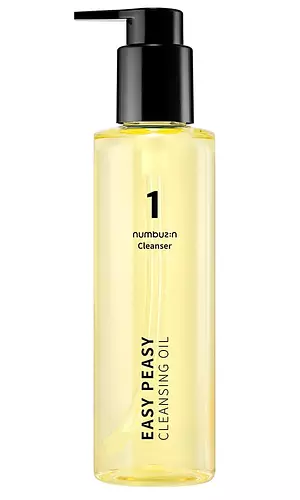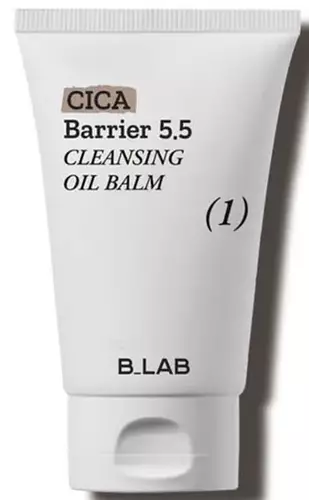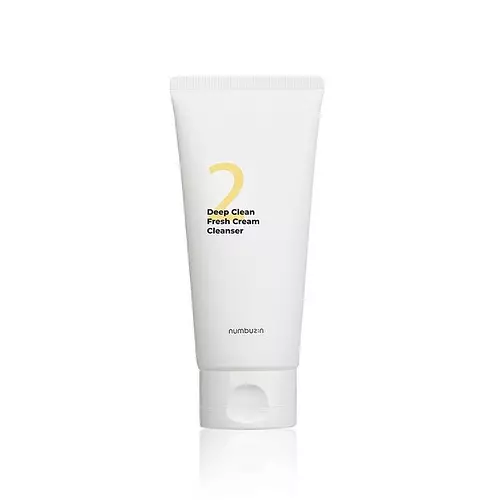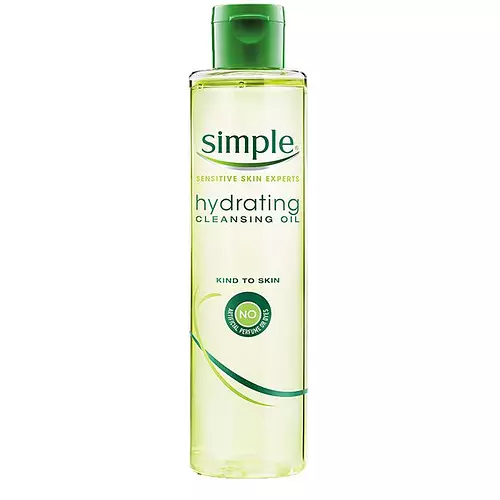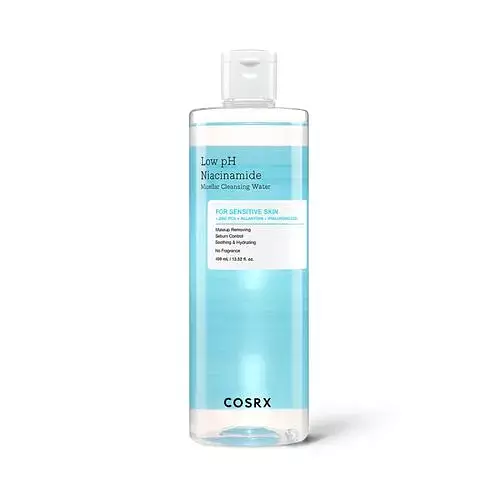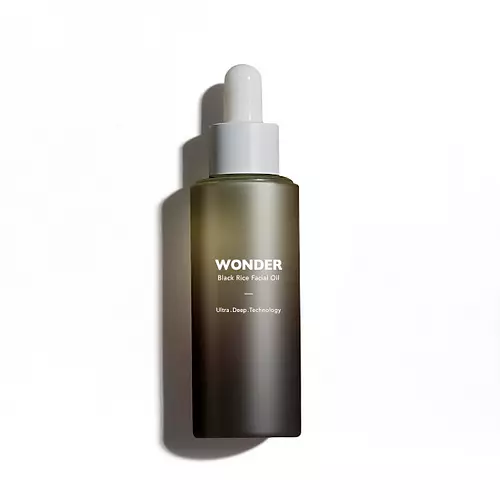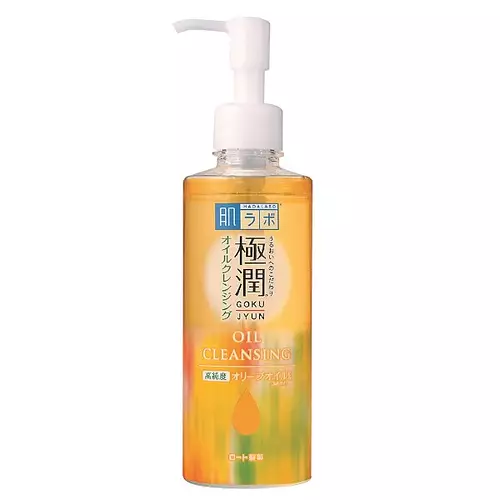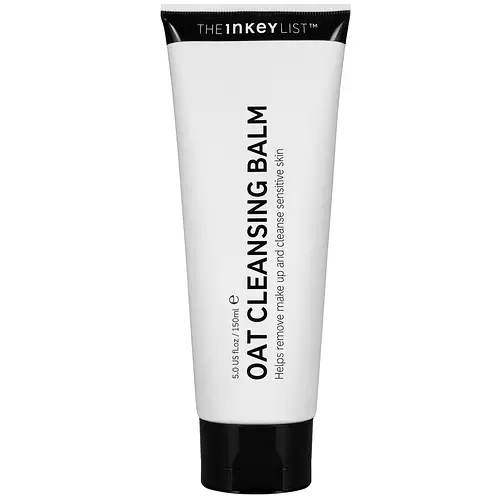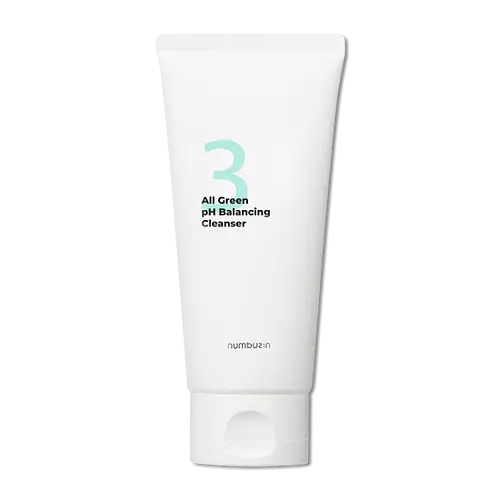Numbuzin No. 1 Easy Peasy Cleansing Oil Versus B.LAB Cica Barrier 5.5 Cleansing Oil Balm
Overview
What they are
These products are both cruelty-free and reef safe . They have a total of 3 ingredients in common
Suited For
They're both likely to be good for dry skin and brightening skin
Free From
They both do not contain any harsh alcohols, common allergens, parabens, silicones or sulfates
What's Inside
They both contain oils
We independently verify ingredients, and our claims are backed by peer-reviewed research. Spot a product that needs an update? Let us know.
Ingredient Info
Numbuzin No. 1 Easy Peasy Cleansing Oil 13 ingredients
B.LAB Cica Barrier 5.5 Cleansing Oil Balm 31 ingredients
At a glance
Click on any of the items below to learn more
Numbuzin No. 1 Easy Peasy Cleansing Oil 13 ingredients
B.LAB Cica Barrier 5.5 Cleansing Oil Balm 31 ingredients
Notable Ingredients
This product contains 1 ingredient that may have this attribute:
Benefits
This product contains 1 ingredient that may have this attribute:
This product contains 1 ingredient that may have this attribute:
Concerns
This product contains 3 ingredients that may have this attribute:
This product contains 3 ingredients that may have this attribute:
This product contains 1 ingredient that may have this attribute:
This product contains 1 ingredient that may have this attribute:
Notable Ingredients
This product contains 1 ingredient that may have this attribute:
This product contains 5 ingredients that may have this attribute:
Benefits
This product contains 1 ingredient that may have this attribute:
This product contains 1 ingredient that may have this attribute:
This product contains 2 ingredients that may have this attribute:
This product contains 1 ingredient that may have this attribute:
This product contains 1 ingredient that may have this attribute:
This product contains 1 ingredient that may have this attribute:
This product contains 1 ingredient that may have this attribute:
This product contains 1 ingredient that may have this attribute:
This product contains 2 ingredients that may have this attribute:
Concerns
This product contains 1 ingredient that may have this attribute:
This product contains 1 ingredient that may have this attribute:
This product contains 1 ingredient that may have this attribute:
Ingredients Side-by-side
Ingredients Explained
These ingredients are found in both products.
Ingredients higher up in an ingredient list are typically present in a larger amount.
Ethylhexyl Palmitate is created from 2-ethylhexyl alcohol and palmitic acid. It is a fatty acid ester.
The fatty acid content of Ethylhexyl Palmitate makes it an emollient. Emollients help soften and hydrate your skin by trapping moisture within.
Ethylhexyl Palmitate is also used to help improve the texture of cosmetics. It helps other ingredient dissolve in products and help disperse ingredients more evenly. In fact, it is commonly used to evenly mix sunscreen ingredients such as avobenzone and ethylhexyl triazone. It can also help stabilize the fragrances in a product as a fragrance fixative.
Ethylhexyl Palmitate can be used to substitute mineral oil.
Learn more about Ethylhexyl PalmitateCaprylic/Capric Triglyceride is an emollient, solvent, and texture enhancer. It is considered a skin-softener by helping the skin prevent moisture loss.
Within a product, Caprylic Triglyceride can thicken the product and make spreadability easier by dissolving clumping compounds. An added benefit of Caprylic Triglyceride is its antioxidant properties.
Caprylic Triglyceride is made by combining glycerin with coconut oil, forming a clear liquid. Caprylic Triglyceride has not been found to be toxic for human use in concentrations under 50%.
While there is an assumption Caprylic Triglyceride can clog pores due to it being derived from coconut oil, there is no research supporting this.
Learn more about Caprylic/Capric TriglycerideWater. It's the most common cosmetic ingredient of all. You'll usually see it at the top of ingredient lists, meaning that it makes up the largest part of the product.
So why is it so popular? Water most often acts as a solvent - this means that it helps dissolve other ingredients into the formulation.
You'll also recognize water as that liquid we all need to stay alive. If you see this, drink a glass of water. Stay hydrated!
Learn more about WaterIngredient Ratings
Here's what our community thinks of the ingredients in these products.
When to use
Numbuzin No. 1 Easy Peasy Cleansing Oil 13 ingredients
B.LAB Cica Barrier 5.5 Cleansing Oil Balm 31 ingredients


Reviews
Here's what our community thinks
Numbuzin No. 1 Easy Peasy Cleansing Oil 13 ingredients
Milan
Pros:
• Very lightweight, easy to wash off, and doesn't leave my skin feeling tight or dry
• Doesn’t seem to irritate my skin even though it...
Pros:
• Very lightweight, easy to wash off, and doesn't leave my skin feeling tight or dry
• Doesn’t seem to irritate my skin even though it contains fragrance (the fragrance is pretty mild and not overpowering)
Cons:
• Over the past couple of days, I’ve noticed a few closed comedones appear on my cheeks, and I feel like the cleansing oil might be causing this issue since it’s the only new product I’ve introduced into my routine. I also follow up with a water-based cleanser to ensure that my skin is cleansed thoroughly.
• Has fragrance (not ideal for people with very sensitive skin)
• Has corn oil, isopropyl myristate, and ethylhexyl palmitate, which are all a bit higher on the comedogenic scale (I feel like they might be clogging my pores, but I'm not 100% sure)
NOTE: I’ll give an update next week if my skin gets worse or better.
